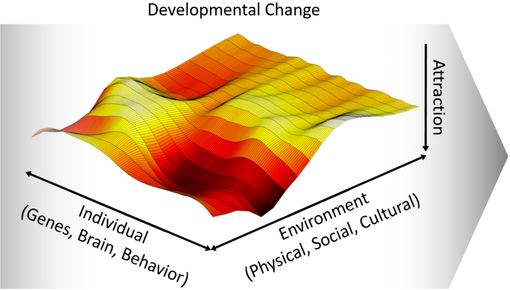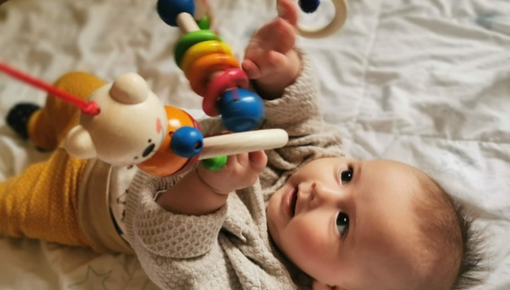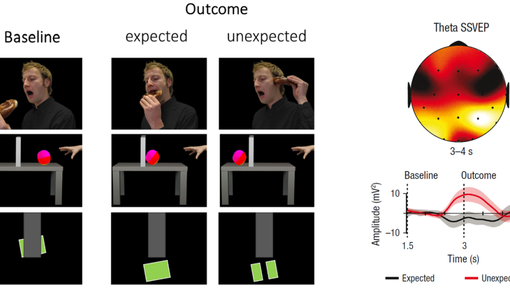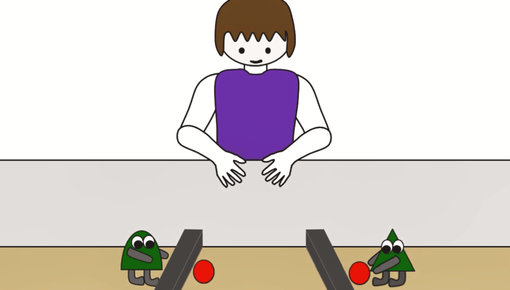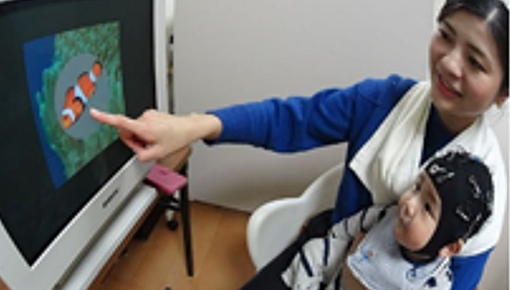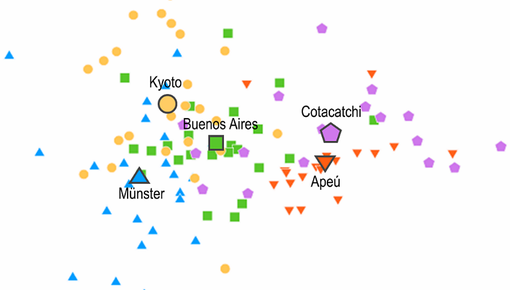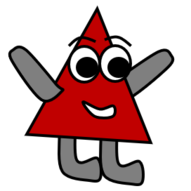
RESEARCH
Topics
Development at the interface between the individual and the environment
How do infants begin to understand and interact with the world around them? Which are the critical cognitive and neural mechanisms at the side of the individual and how do these mechanisms act in concert with the experiences that young children gather in the interaction with their physical, social, and cultural environment? We investigate human development from a dynamic developmental systems perspective, aiming to understand the complex interplay between individual and environmental factors. Our research can roughly be sorted along three lines, (1) early (socio-)cognitive development, (2) neural learning mechanisms, as well as (3) early social and cultural learning.
References:
Köster, M., Kayhan, E., Langeloh, M., & Höhl, S. (2020) Making Sense of the World – Infant Learning from a Predictive Processing Perspective. Perspectives on Psychological Science. doi.org/10.1177/1745691619895071
Köster, M., & Kärtner, J. (2019). Why do infants help? A simple action reveals a complex phenomenon. Developmental Review. doi.org/10.1016/j.dr.2018.11.004
Early (socio-)cognitive development
With behavioral, eye-tracking, and neurophysiological (EEG) Methods we investigate infants' early understanding about their social and physical environment. For example we investigate the principal mechanisms that drive human prosocial development, infants’ early normative understanding, as well as the development of early emerging concepts about the physical world.
References:
Xie, S., Hoehl, S., Moeskops, M., Kayhan, E., Kliesch, C., Turtleton, B., Köster, M.* & Cichy, R. M.* (in press) Visual category representations in the infant brain. Current Biology. preprint: doi.org/10.1101/2021.11.03.466293
Köster, M.*, Langeloh, M.*, & Höhl, S. (2019) Visually entrained theta oscillations increase for unexpected events in the infant brain. Psychological Science. doi.org/10.1177/0956797619876260
Köster, M., Ohmer, X., Nguyen, T. D., Kärtner, J. (2016) Infants understand others’ needs. Psychological Science. doi.org/10.1177/0956797615627426
Neuronal learning mechanisms
In electroencephalographic (EEG) studies we addresses how infants, children and adults sample novel information from their environment and build up lasting memories. Specifically, we are interested how neural mechanisms develop and change from infancy to adulthood. Our focus lies on neural oscillation, which form the bedrock of neural communication and learning processes. Finally, we use rhythmic visual stimulation methods to modify neural learning processes and thereby promote human learning.
References:
Köster, M., Langeloh, M., Kliesch, C., Kanngiesser, P.*, & Höhl, S.* (2020). Motor cortex activity during action observation predicts subsequent action imitation in human infants. Neuroimage. doi.org/10.1016/j.neuroimage.2020.116958
Köster, M., Martens, U., & Gruber, T. (2019). Memory entrainment by visually evoked theta-gamma coupling. Neuroimage. doi.org/10.1016/j.neuroimage.2018.12.002
Friese, U.*, Köster, M.*, Hassler, U., Martens, U., Barreto, N. T., & Gruber, T. (2013). Successful memory encoding is associated with increased cross-frequency coupling between frontal theta and posterior gamma oscillations in human scalp-recorded EEG. Neuroimage. doi.org/10.1016/j.neuroimage.2012.11.002
Early social and cultural learning
Through behavioral measures we assess early interaction experiences that young children make in their social and cultural environment and how those shape early human development. For example, we observe, in standardized and ecological settings, how parents teach novel activities, transmit social values and how they guide their children's attention.
References:
Köster, M., Giner Torréns, M., Kärtner, J., Itakura, S., Cavalcante L., & Kanngiesser, P. (2022). Parental teaching behavior in diverse cultural contexts. Evolution and Human Behavior. doi.org/10.1016/j.evolhumbehav.2022.07.002
Schuhmacher, N., Köster, M., & Kärtner, J. (2019). Modeling prosocial behavior increases helping in 16-month-olds. Child Development. doi.org/10.1111/cdev.13054
Köster, M., Cavalcante, L., Carvalho, R., & Resende, B. D., Kärtner, J. (2016). Cultural Influences on Toddlers’ Prosocial Behavior: How Maternal Task Assignment Relates to Helping Others. Child Development. doi.org/10.1111/cdev.12636
* Joint first/last authors
Research Funding
Our research is supported by the University of Regensburg and two ongoing DFG funded projects. Further information on the DFG funded projects can be found here.


